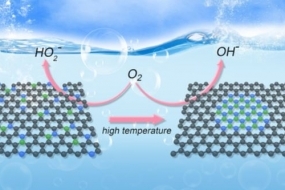We are thrilled to share our work on constructing the turbostratic carbon with interfacial B-N moieties for electrosynthesis of HO2- that is now available in AngewandteChemie and it also confirmed that fine tuning the active moieties is pivotal for understanding the structure-selectivity relationship of ORR on electrocatalysts. The work is in close collaboration with three international research institutes from China, Australia and Germany.
Employing an IL-assisted doping strategy, turbostratic carbon catalysts with identifiable interfacial boron-nitrogen moieties were fabricated and were applied as efficient 2 e− ORR electrocatalysts in alkaline aqueous media. By employing combined X-ray absorption spectroscopy, FTIR and XPS characterizations, we could confirm the presence of abundant, highly dispersed B−N−C configurations in CNB-ZIL 8, while samples obtained from higher pyrolysis temperatures tend to exhibit agglomerated h-BN domains, showing distinguishable structure differences that can be correlated to different catalytic behavior. Further conducting electrochemical measurements reveals a positive relationship between the presence of interfacial B−N−C moieties and a high HO2− selectivity, giving insights into the origin of peroxide selectivity in boron and nitrogen co-doped carbon catalysts.
Read the full paper or connect with corresponding author Dr Xunyu Lu

A boron and nitrogen co-doped turbostratic carbon catalyst with tunable B−N−C configurations is fabricated by the assistance of a zwitterionic liquid